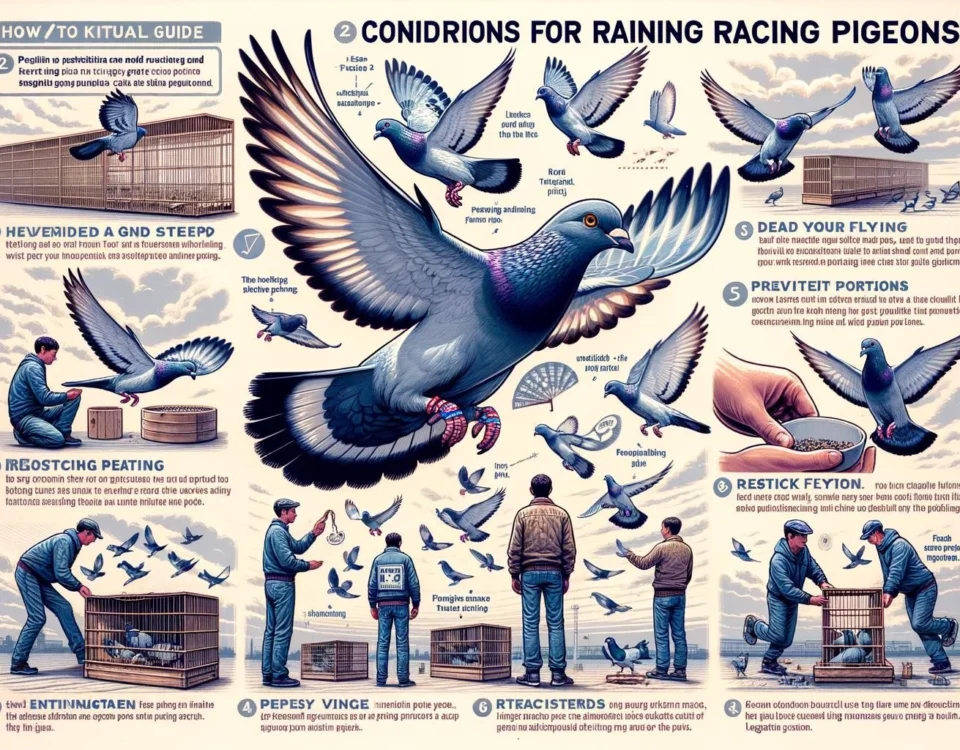Racing pigeons are a popular and fascinating hobby for many bird enthusiasts. These specially trained pigeons are bred and raised for racing competitions, where they are released from a specific location and race back to their home loft. To keep track of their pigeons during these races, fanciers have implemented various tracking technologies, such as GPS trackers and leg rings with unique identifiers. In this article, we will explore the different methods used to track racing pigeons and their significance in the sport.
Key Takeaways
- Racing pigeons are trained and bred for competitions, where they are released from a specific location and race back to their home loft.
- To track and monitor the pigeons during races, fanciers use GPS trackers and leg rings with unique identifiers.
- The GPS trackers provide valuable insights into the pigeons’ flight paths, speed, altitude, and distance traveled.
- The leg rings with unique identifiers allow the owners to trace and identify the pigeons if they get lost or strayed.
- The tracking technology not only enhances the efficiency and accuracy of racing pigeon competitions but also ensures the welfare and safety of the birds.
GPS Tracking for Racing Pigeons
One of the most advanced technologies used to track racing pigeons is GPS tracking. GPS (Global Positioning System) trackers are small devices that can be attached to the pigeons or incorporated into specially designed leg rings. These trackers provide real-time location data, allowing fanciers to monitor the pigeons’ flight paths and track their progress during races.
The GPS trackers used for racing pigeons are lightweight and designed to be non-intrusive, so they do not hinder the birds’ flight capabilities. These trackers are equipped with batteries that can last for several hours, ensuring that the birds can be tracked throughout the duration of the race. The data collected by the GPS trackers, such as speed, altitude, and distance traveled, can be downloaded and analyzed after the race to gain valuable insights into the pigeons’ performance and behavior.
GPS tracking for racing pigeons has revolutionized the sport by providing fanciers with a comprehensive understanding of their birds’ flight patterns. This technology allows them to identify the most efficient routes taken by the pigeons and adjust their training and racing strategies accordingly. It also enables them to track their pigeons’ progress in real-time, enhancing the excitement and competitiveness of the races.
Leg Rings with Unique Identifiers
In addition to GPS tracking, another common method used to track racing pigeons is the use of leg rings with unique identifiers. These leg rings are made of lightweight materials and are securely attached to the birds’ legs. Each ring has a unique number or code engraved on it, allowing the owners to identify and trace their pigeons.
When a racing pigeon is found or strays away from its loft, the leg ring becomes a crucial identifier. The person who finds the pigeon can use the information on the leg ring to contact the owner and arrange for its safe return. Additionally, the leg rings are used to register the pigeons for races, ensuring that each bird is correctly identified and accounted for.
The leg rings with unique identifiers serve as a form of identification and protection for the racing pigeons. They help prevent the loss or theft of the birds and ensure their safe return if they go astray. Moreover, the leg rings contribute to the overall organization and fairness of racing pigeon competitions, as each bird can be traced back to its rightful owner.
Significance of Tracking Racing Pigeons
The tracking technology used in racing pigeon competitions has several significant benefits. Firstly, it enhances the efficiency and accuracy of the races by providing real-time location data and insights into the pigeons’ flight patterns. This information allows fanciers to evaluate their pigeons’ performance and make informed decisions regarding training, breeding, and racing strategies.
Secondly, tracking technology ensures the welfare and safety of the racing pigeons. By monitoring their flight paths and progress, fanciers can identify any deviations or signs of distress, allowing them to take immediate action and ensure the well-being of their birds. The ability to track the pigeons also helps in the recovery of lost or stray birds, as the owners can be promptly notified and provided with information on the bird’s whereabouts.
Lastly, tracking racing pigeons adds an element of excitement and engagement to the sport. Fanciers and enthusiasts can follow the progress of the races in real-time, either through online platforms or mobile applications. This creates a sense of community and camaraderie among pigeon racing enthusiasts and allows them to celebrate the successes and achievements of their birds.
Overall, tracking racing pigeons has become an integral part of the sport, improving the competitiveness, welfare, and overall experience for both fanciers and enthusiasts. The combination of GPS tracking and leg rings with unique identifiers provides a comprehensive and reliable system for monitoring and managing racing pigeons during competitions.








